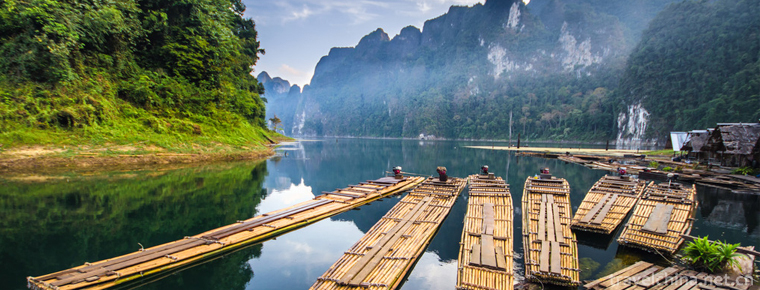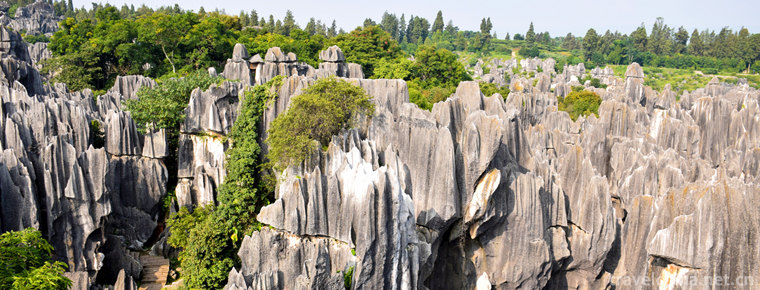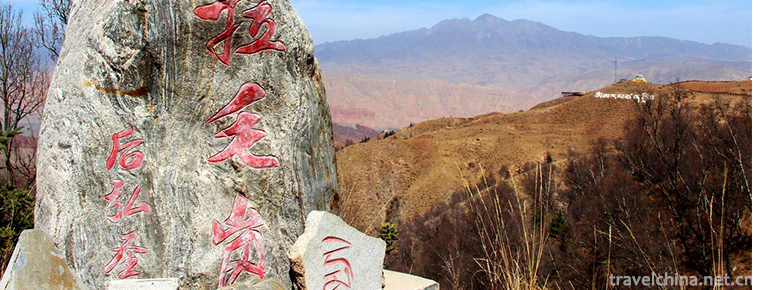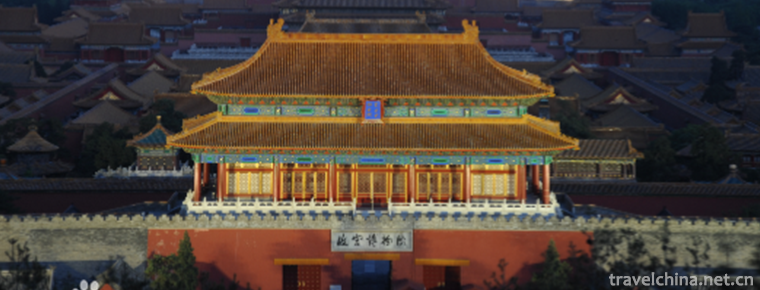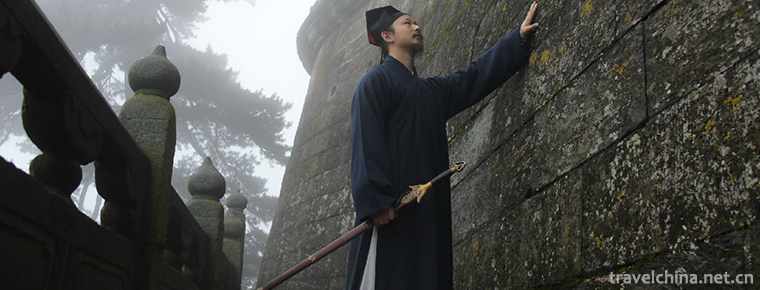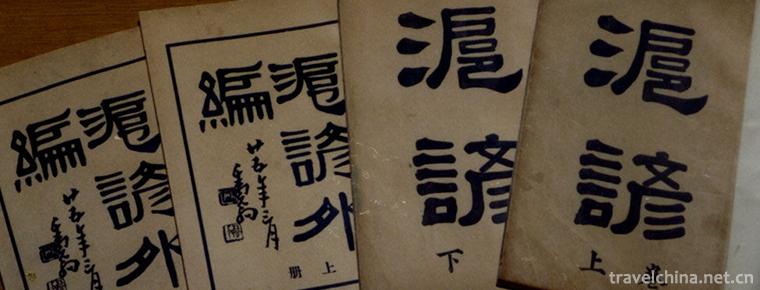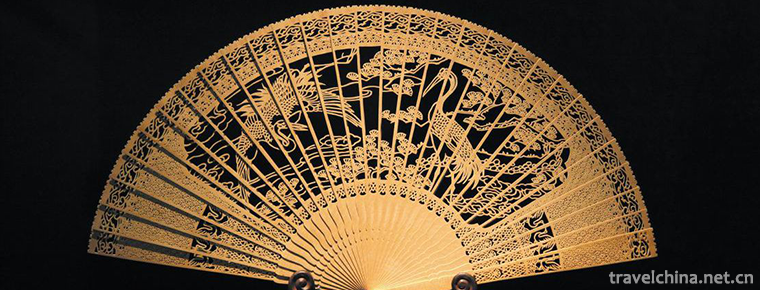Andai Dance of Mongolian Nationality
Andai Dance of Mongolian Nationality
Mongolian Andai Dance, the traditional dance of Kulun Banner in Inner Mongolia Autonomous Region, is one of the national intangible cultural heritage.
Andai Dance originated from the Kulun Banner. According to textual research, Andai Dance was formed in the late Ming and early Qing Dynasty. At that time, the Kulun system was "the unity of politics and religion", with numerous temples and monks. In the mid-Qing Dynasty, a large number of immigrants from all over the country rushed into the grassland, and the cultural customs of different tribes and regions mingled to create the culture of the Kulun Mongolian nationality, which gave birth to Andai dance with a broad mass character. Andai usually takes place during festivals or leisure time. One singer leads the crowd and hundreds of men, women and children sing and dance. Andai dance has a strong self-entertainment, distinct national characteristics and strong flavor of life. It is relaxed and pleasant, easy to learn, singing along with the choreographer and full of appeal. Men and women, old and young, can enter and jump without time and place restrictions. Just follow the rhythm of the music and step with the lead singer.
On May 20, 2006, Andei Dance of Mongolian nationality was approved by the State Council of the People's Republic of China and listed in the first batch of national intangible cultural heritage list, the heritage number: III-29.
historical origin
Andai dance, which spreads in the eastern part of Horqin grassland in Inner Mongolia, originates from a religious dance, and is used to pray for the protection of gods, dispel evil spirits and eliminate disasters, and relieve illness. In the past, singing as dancing has strong national style and healthy and active artistic characteristics, and it is a brilliant and wonderful flower in Mongolian folk art treasure house.
In the late Ming and early Qing Dynasties, Andai Dance, a dance of praying for the protection of gods and eliminating evil spirits and calamities, rose in Horqin grassland of Inner Mongolia. Andai dance has a distinct national style and a strong flavor of life. It is a landmark brand of grassland culture and a wonderful dance flower that Mongolians are proud of. In Inner Mongolia, people have to dance Andai Dance at festivals, harvest celebrations, weddings, funerals and reception banquets.
In the late 1950s, the Andai Dynasty was divided into "traditional Andai" and "Xin'an Dynasty (Andai Dance)". The Xin'an Dynasty is the evolution of the social development of the traditional Andai Dynasty. It is an art of singing and dancing with entertainment as its purpose and aesthetic quality. It is the most well-preserved dance of the Mongolian dance art forms with the longest history.
After the founding of New China, productivity and medical level have been greatly improved, Andai dance has also been separated from the "traditional andai". Andai "Bo" became a folk artist, Andai also became a real dance art. The wooden pole or broken axle in the center of the early Andai farm disappeared, so people no longer danced around the circle facing the centre of the circle. The props of Andai Dynasty have developed from bell whips, towels and skirts to red silk towels (now yellow, green, pink and other colors). Andai Dance has become a popular form of self-entertainment.
Since the 1950s, Andai Dance has shaken off the shackles of old customs and formed typical folk activities. Literary and artistic workers are constantly striving for aesthetic sublimation and making it onto the stage. In addition, researchers go deep into the field, collect and sort out the traditional Andai dance, and dance directors constantly absorb folk nutrients and boldly innovate practice, so that Andai dance appears in people's vision with a new look.
Since 1957, the old artist of Erdunbara put Andai on the stage as a song and dance art program, which attracted everyone's attention. A large number of literary and artistic workers have made in-depth field visits to learn from the old artists and the art of singing and dancing in Andai. Since 1957, "Andai Dance" has appeared in people's vision like "Spring Bamboo Shoot" after the rain.
In 1958, the old artist of Erdunbara danced "Andai Dance" to Beijing, which caused a sensation and was warmly welcomed by people. In August 1959, "Andai Dance" went abroad and was invited by Mongolia to participate in the "Sino-Mongolian Friendship Years" and performed "Andai Dance". In the 1960s, there appeared a representative form of performance, which was reduced from multi-person Andai dance to double Andai dance "Happy News".
In the 1990s, a large-scale opera "Song of the Andai Dynasty" was created, which laid a foundation for the spread and development of the Andai Dynasty and played a role in promoting it.
Dance features
Form of performance
In Andai dancing, stand in a circle, hold a colored silk or handkerchief, and dance with the singer's song. The main movements include stamping, kicking, towel-winding and towel-swinging. The order of dance is to stand up, walk slowly, March forward, comfort, cheer up, farewell and so on. The colored silk in hand flings down with the dance steps and then rises up. When dancing to the climax, the footsteps are like ten thousand horses galloping, ups and downs, but the colored silk flies.
Dance props
In the performance of Andai Dance, props such as handkerchiefs or silk handkerchiefs are often used. When performing traditional Andai dance, performers usually hold silk pads, headscarves or skirts of Mongolian costumes in their hands. With the development of the times, they are gradually simplified to silk pads or handkerchiefs. The color of handkerchiefs and handkerchiefs is also regional diversification, and the specifications are relatively relaxed.
Characteristics of music
Andai, as a precious folk art, has many melodies and more than 40 kinds. It is suitable for expressing various feelings and setting off different environmental atmosphere. Andai's music has its unique characteristics in the aspects of mode, musical form, rhythm, rhythm and melody. Andai's form is singing and dancing, so his tunes are not only fluent and beautiful folk songs, but also suitable for the movement of dance characteristics, regular rhythm, clear and strong rhythm.
Inheritance and protection
Inheritance value
Andai Dance has distinct national characteristics and strong flavor of life. Strong rhythm steps, flying towels, singing while dancing, singing along with the choreography, climax, simple, popular, appealing. It is a comprehensive form of folk culture and art with dance as the main body of Mongolian people. In the social and cultural construction of Qianguo County, Andai Dance occupies an important position. It plays an important role in promoting Mongolian folk dance art.
Inheriting characters
Naren Mandula, male, Mongolian, born in 1946, Tongliao, Inner Mongolia. The second batch of national intangible cultural heritage projects are representative inheritors of Mongolian Andai dance.
protective measures
In 1996, the Kulun Banner of Inner Mongolia was named "the hometown of Chinese Andai art".
Since 2009, the Kulun Banner Government has held three large-scale Andai Art Festivals, which promoted the inheritance and development of Andai culture, not only promoted the economic development, but also further expanded the stage performance form of Andai dance. At the same time, it also enhanced the artistic realm of Andai dance while entertaining the public. Through the way of stage performance to inherit Andai, Andai Dance has stepped out of Kulun, into the whole country, and into the world.
On March 29, 2019, the fourth Andai Dance Training Course in Tongliao City officially opened in Kerqin Cultural Museum.
social influence
Important performance
In 2002, Andai Dance was displayed in the opening ceremony of Fuxin Sixth City Games.
In 2008, Andai Dance was displayed in the opening ceremony of the 50th anniversary celebration in Fuxin Mongolian Autonomous County.
In 2012, Andai Dance was displayed in the opening ceremony of the First Mongolian Nadam Congress in Fumeng County.
Honorary commendation
In 2003, 600 Andai dancers participated in Fumeng County Square Dance Competition and won the first prize.
In 2012, the work of Horqin Vocational College of Art "Andai Dao Mu Song" participated in the 10th Peach and plum Cup Dance Competition and won the prize of original teaching drama and encouragement.

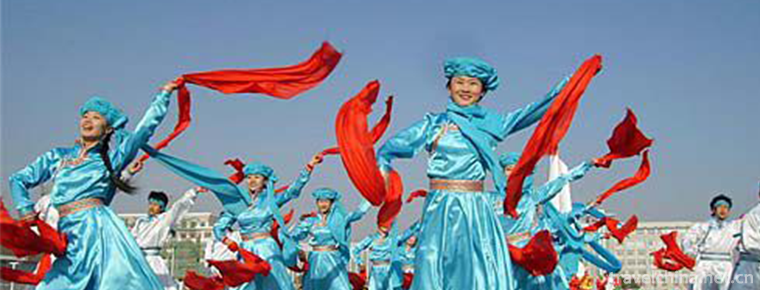
-
Lijiang River
The Lijiang River, a branch of the upper reaches of the Guijiang River.
Views: 85 Time 2018-10-12 -
Kunming CityStone Forest Scenic
Kunming Stone Forest Scenic Area, also known as Yunnan Stone Forest.
Views: 291 Time 2018-10-21 -
Qiankun Bay Scenic Area
Qian Kun Wan Scenic Area is located in Qian Kun Wan Town, Yanchuan County, Yan'an City, Shaanxi Province. It faces the Yellow River to the East and Yonghe County, Shanxi Province.
Views: 192 Time 2018-12-22 -
Yellow River Grand Canyon
The Yellow River Grand Canyon is located in Qingtongxia Town, Wuzhong City, Ningxia. It is 20 kilometers away from Wuzhong City. It is a scenic spot of the Yellow River Canyon composed .
Views: 159 Time 2019-01-18 -
Construction Skills of Official Ancient Architecture
In the process of construction and maintenance of the Palace Museum ancient buildings, a complete set of traditional palace building construction techniques with strict shape has been formed on the ba.
Views: 297 Time 2019-05-01 -
Wudang Martial Arts
At the end of Yuan Dynasty and the beginning of Ming Dynasty, Zhang Sanfeng, a Taoist of Wudang School, established Wudang School and was respected as the founder of Wudang Wushu..
Views: 129 Time 2019-06-30 -
Proverbs Shanghai Proverbs
Shanghai proverb, also known as Shanghai proverb, is the traditional folk oral literature in Shanghai. Local gossip. It belongs to one of the national intangible heritage..
Views: 120 Time 2019-07-10 -
Fan making Techniques
Suzhou Fan is a special product of Suzhou. It is famous for its elegance, delicacy and artistic characteristics. Including folding fan, sandalwood fan and silk Palace fan, collectively known as ".
Views: 150 Time 2019-07-25 -
Xianshi ancient town scenic spot in Zigong City
Xianshi ancient town scenic spot in Zigong City stands on the Bank of Fuxi River 11 kilometers southeast of Zigong City, the "Millennium salt capital", which is in contrast with Zigong, a famous historical and cultural city..
Views: 177 Time 2020-10-15 -
The situation of Chinese embroidery in various historical dynasties
The origin of Chinese embroidery is very early. It is said that "Shun ordered Yu to embroider multicolored embroidery". It was developed in the Xia, Shang, Zhou Dynasties and Qin and Han Dynasties. From the early unearthed textiles, embroidery .
Views: 220 Time 2020-12-12 -
Nanchong hydrology
Nanchong is rich in precipitation. The average annual precipitation is 1000 mm, excluding evaporation, the annual total water is about 4.191 billion cubic meters, and the average annual runoff depth is about 313 mm. The distribution of runoff depth is generally .
Views: 348 Time 2020-12-17 -
Location of Yibin
Yibin City is located in the south of Sichuan Province, at the junction of Sichuan, Yunnan and Guizhou provinces, and the confluence zone of Jinsha River, Minjiang River and Yangtze River. It spans 27 ° 50 '- 29 ° 16' n and 103 ° 36 '- 105 ° 20' E. The cit.
Views: 363 Time 2020-12-18
